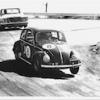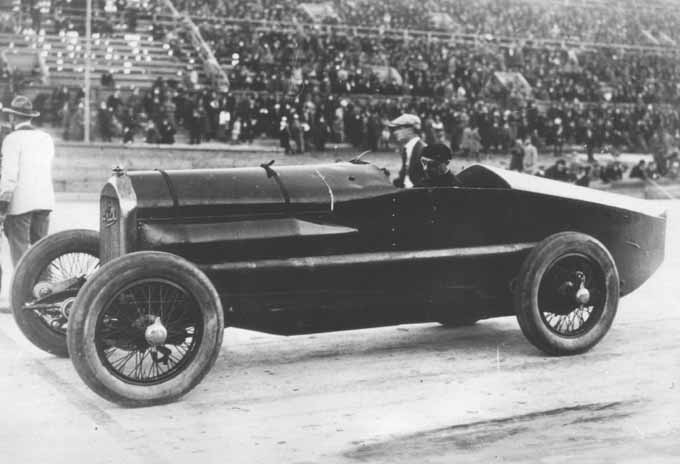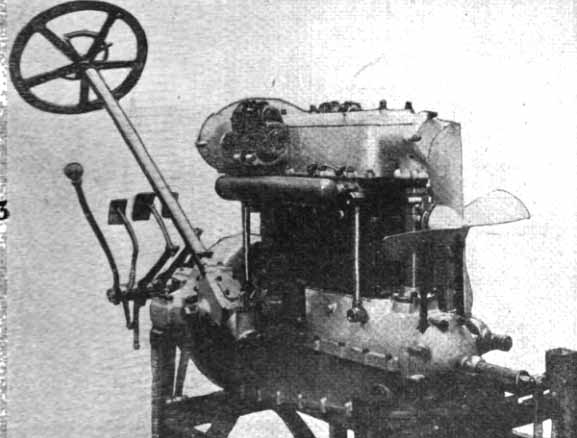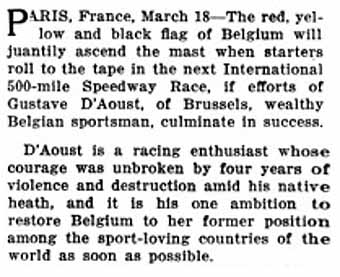Could this be the « unseen » D’Aoust ?
In October 1924 at Montlhéry, a « Match des Champions » was held during a race meeting between three cars and their drivers.
1. Ernest Eldrige and Mephistopheles
2. G Parry-Thomas and his Leyland-Thomas No1
3. Arthur Duray and a 120HP D’Aoust
The race was won by Eldridge after the Leyland suffered tyre problems. The D’Aoust was last.
Obviously the history of the first two cars are very well documented, but the D’Aoust remains something of a mystery. J D’Aoust built smallish cars in Belgium, but this was a larger car fitted with a 120HP Hispano V8 engine.
I seem to remember Mr Boddy asking his readers if anyone had a photo of the car – I do not think any were forthcoming…
Could the car hiding behind the Leyland-Thomas be that mystery D’Aoust ?




















